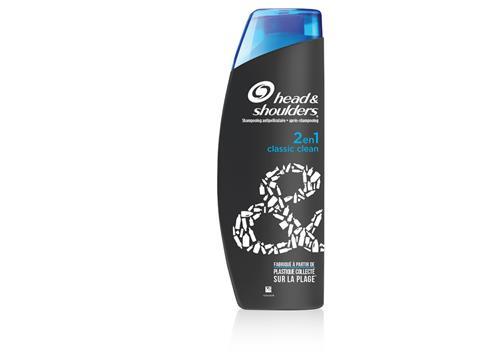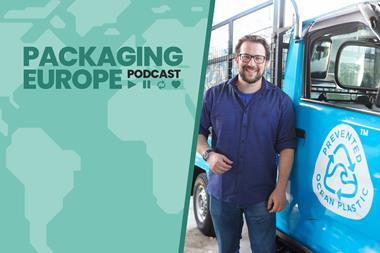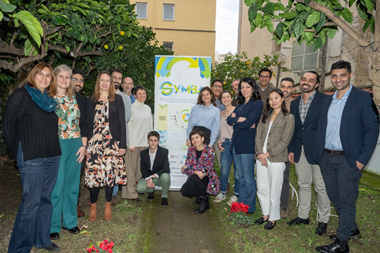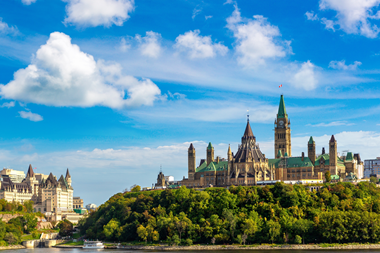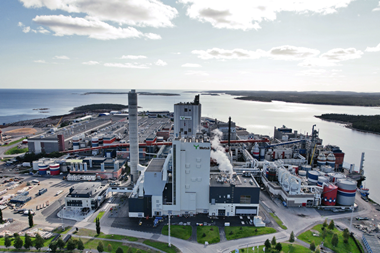
Head & Shoulders has received the UN Momentum for Change award in the Planetary Health category, which shines light on innovative, scalable and practical efforts to improve sustainability in recognition of the launch of a recyclable shampoo bottle made with 25 per cent recycled beach plastic. Tim Sykes spoke exclusively to two of the partners in the project, Lisa Jennings (VP Head & Shoulders and Sustainability Hair Care, at the brand owner Procter & Gamble) and Jean-Marc Boursier (group senior executive VP, in charge of the Recycling & Recovery Europe Division at the waste recovery specialist SUEZ), about the initiative and its wider implications.
Tim Sykes:
Can you tell me about the genesis of the beach plastic project and the challenges you faced?
Lisa Jennings:
I am personally very passionate about recycling, whether it’s at home or at work. A few years ago, Race for Water, an NGO, showed me the scale and impact of the issue of plastic pollution. The reality is that businesses can play an important role in driving and inspiring change in the world and this, in turn inspired me to make sustainability a priority for my business unit. My team and I are very passionate about driving responsible consumption amongst our consumers. This process made me realise that the problem of plastic pollution cannot be solved in silos. We all need to be part of the solution, leading by example, both as citizens and as business leaders. To make our sustainability vision a reality, we’ve established a whole ecosystem of external partnerships that bring together committed and determined individuals and businesses.
With regard to the making of the Head & Shoulders Beach Plastic bottle, we faced three key challenges. The first was availability of beach plastic which we could use in our products. Even though ocean and beach plastic pollution is a huge problem impacting the whole world, the quantities of beach plastic that is not degraded beyond the point of repurpose were limited. This is where our partners, TerraCycle and SUEZ, with help of more than 1000 volunteers, played a key role in collecting, sorting and ultimately delivering high quality pellets made out of available beach plastic waste.

The second challenge was technical. To make a bottle with beach plastic you need to ensure the packaging is strong to prevent it from breaking. We needed to ensure that the shampoo inside the bottle is not compromised. This is where our technical teams and our partner ALPLA played a key role. The bottle has three layers: the first inner layer is virgin resin to ensure the right environment for the shampoo, the second inner layer is beach plastic, and the outer layer is virgin resin.
The third challenge we faced was a marketing/branding challenge. The Head & Shoulders bottle is recognisable because of its iconic white and blue packaging. The Beach Plastic bottle is grey. Beach plastic comes in variety of colours and when mixed, it becomes grey. The decision to go with a grey-coloured bottle was not an easy one, but we felt that it was the right thing. It allowed us to signal the origin of the packaging material and allowed us to talk about its authenticity.
Jean-Marc Boursier:
At SUEZ we consider that waste should not be the end of the story anymore, but the beginning… this is what we call the ‘resource revolution’. We define ourselves as a ‘secondary raw material and energy provider’: our job is to collect, treat and transform waste into new material and provide our downstream customers, such as P&G, with high-quality material. For example, concerning recycled plastics, we now reach a quality similar to virgin plastic.
Working with P&G and TerraCycle teams on the Head & Shoulders project was amazing, but recycling beach plastic is a tough challenge. The main lesson from this project is that cooperation between stakeholders is key. We overcame this challenge because P&G, TerraCycle and SUEZ worked closely together along the plastic value chain, from collection to treatment and transformation, but also right through to marketing.
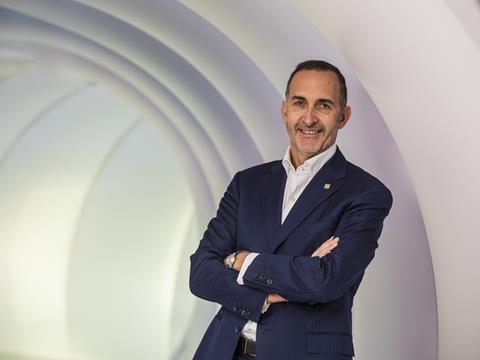
TS:
This initiative is impressive on its own terms but is it scalable? Is beach plastic economically viable as a secondary raw material (SRM)?
LJ:
We intend to pursue the initiative at higher volumes. Our ambition is to expand this pilot project into other geographies. There are also signs of wider interest in this sort of effort. Within P&G the dish washing brand Fairy recently launched an Ocean Plastic bottle made completely from post-consumer recycled plastic and ocean plastic. This launch aims to continue driving awareness of the issue of ocean plastic pollution, inspire consumers to physically participate in beach clean-ups and recycle household waste. Meanwhile, we also hope that our project inspires other industries to take action. We are aware that the dairy industry in France will start commercialising grey milk bottles made with recycled plastic.
JMB:
Recycling beach plastic is more expensive than recycling plastic collected and directly sorted in our facilities. Using beach plastic as a SRM is a great way to make people understand what is at stake with plastic pollution and plastic recycling. I would say it is iconic and an amazing initiative from P&G.
But plastic pollution is a global problem that needs to be tackled at every stage. Collecting more and more plastic from industries or individuals is essential to improve the recycling rate and prevent plastic pollution. We still have a long way to go: in Europe, only seven per cent of the 50 million annual tonnage used is recycled polymer, meaning that 93 per cent is still virgin materials coming from fossil fuels.
At SUEZ we operate nine specialist facilities in Europe in which every year 400,000 tons of plastic waste are processed and 135,000 tons of new plastic resources are produced. We definitely want to improve these volumes.
TS:
Presumably, we ultimately want to be collecting as close as possible to 100 per cent of used plastic before it ends up in the sea, rather than continuing to extract it from the natural environment. Do you have a view on overall strategies for combatting the ocean plastic problem? – and can brand owners get involved in promoting the systematic capture of waste, in addition to looking at the content of their packaging materials?
LJ:
The overall strategy is to involve all the stakeholders that can be part of the solution. In this case these are consumers, industry leaders as well as governments and NGOs. Consumers have the option to reward products that benefit the environment by purchasing them. As consumers, we should also recycle the plastic we consume and consider going the extra mile by joining beach and river clean-ups. For the launch of the Head & Shoulders Beach Plastic bottle, we invited consumers to join clean-ups through an interactive map available on our website with the dates and contact details of the NGOs that helped us collect the plastic that makes the bottle. As industry leaders, we should lead by example by making sustainability a priority and enabling our organisations to forge cross-industry collaborations.
JMB:
Fortunately, even though plastic pollution is a concerning topic, most of the plastic produced does not end up in the environment or in the oceans. We know how to collect plastic waste (and digital technology will be key in the coming years to improving waste collection), but the problem is that little is still recycled.
As an example, in Europe plastic production exploded from one million tons/year in 1960 to 50 million in 2015: it multiplied by 50 times in 50 years. And of the 50 million tons of plastic waste produced every year in Europe, only 25 per cent is recycled. In Europe, plastics recycling is now a booming market because of the constantly changing regulations – the EU aims to reach a 55 per cent recycling rate in 2025 – and the growing demands of manufacturers.

TS:
Is P&G looking at the viability of a range of feedstocks that can improve sustainability – e.g. bioplastics as well as recycled materials?
LJ:
We are committed to creating products that are loved by our consumers and have a reduced impact on the environment. We know our consumers are looking for sustainable products. That is why we are working towards our long-term vision of using 100 per cent renewable and recycled materials in our products and packaging. Our goal is to create the capability to replace our top petroleum-derived materials with renewable materials. Our research focuses on finding cost effective bio-based resins, cleaning agents and acrylates.
TS:
What other activities are you involved with to help reduce waste?
LJ:
We have initiated a number of waste-reduction pilots in both developed and developing regions. Waste to Worth is an effort to develop an integrated, profitable and replicable waste-management business model that finds value from waste. One key pilot is currently underway in the Philippines. The goal of the pilot is to convert more than 1000 tons of solid waste to value per day.
In addition, P&G continues to partner with the Closed Loop Fund (CLF). This is a social impact investment fund providing U.S. cities access to capital to expand and provide comprehensive recycling programs. By 2020, CLF aims to invest $100 million with the goal to create economic value for U.S. cities by increasing recycling rates. We are also a member of The Recycling Partnership, an industry collaboration that helps to transform recycling programs in towns across the US. The Partnership continues to expand its impact and reached an important milestone of supporting its first 100 cities.
JMB:
As newly elected president of FEAD (European Federation of Waste Industry), I recently shared my views with the European Commission about the needs of a new plastic strategy. In a nutshell, I have pushed five propositions:
- The need to focus more on the very first step in the value chain and intensify the cooperation with designers and manufacturers to ensure that products are designed to prevent waste and to be easily reused, dismantled and recycled. I talked about the idea of “Circular Design”;
- The need to introduce harmonised eco-labelling rules to incorporate indications of recycled content AND recyclability;
- The introduction of legislation promoting minimal recycled plastic content in certain packaging;
- The intensification of Green public procurement and the promotion of the use of recycled content in public tenders;
- The introduction of fiscal incentives to boost demand, like lower VAT rates on recycled polymers or a CO2 carbon tax.
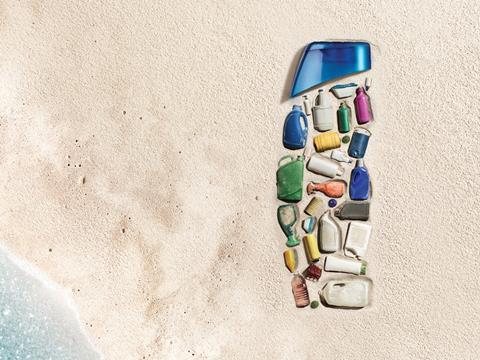
TS:
You mentioned the importance of collaboration in facing universal problems such as ocean plastics. What is the brand owner’s role in this?
LJ:
Multi-stakeholder collaboration is critical. Today only two per cent of plastic ends up being recycled, 73 per cent is burned or buried and 25 cent ends up in our marine system: our oceans, rivers, lakes and beaches. This monumental problem cannot be addressed in silos. That is why last year we joined the Trash Free Seas Alliance (TFSA), a multi-stakeholder coalition that brings together thought leaders from industry, conservation and academia to create a forum for pragmatic, real-world collaboration focused on the measurable reduction of ocean trash. The goal is to reduce the amount of land waste entering the ocean. Acknowledging that we can be part of the solution is the first step.
TS:
Sustainability in packaging is subject to numerous considerations – energy, weight, space efficiency and preventing product waste, as well as packaging materials at end of life. Can you give an insight into how you prioritise these sometimes clashing requirements?
LJ:
At P&G, we see protecting the earth as both our responsibility and a business opportunity. We believe that actions speak louder than words, which is why we consistently deliver innovative solutions that demonstrate progress towards our long-term vision of using 100 per cent renewable and recycled materials in our products and packaging.
As the Sustainability Leader for P&G’s Hair Care portfolio, I declared recycled packaging as a core strategy for my business unit and mobilised my team to innovate and create solutions that are commercially viable and sustainable. This led to forging cross-industry collaborations with TerraCycle, SUEZ, a number of NGOs and Carrefour, to launch the world’s first recyclable shampoo bottle made with recycled beach plastic.
I see the launch of the Head & Shoulders Beach Plastic bottle as the beginning of our sustainability journey. As announced at the World Economic Forum in Davos in January 2017, by the end of 2018 more than half a billion shampoo bottles sold in Europe will include up to 25 per cent post-consumer recycled plastic. This represents more than 90 per cent of all the P&G hair care bottles sold in Europe across our portfolio of flagship brands like Pantene and Head & Shoulders.
